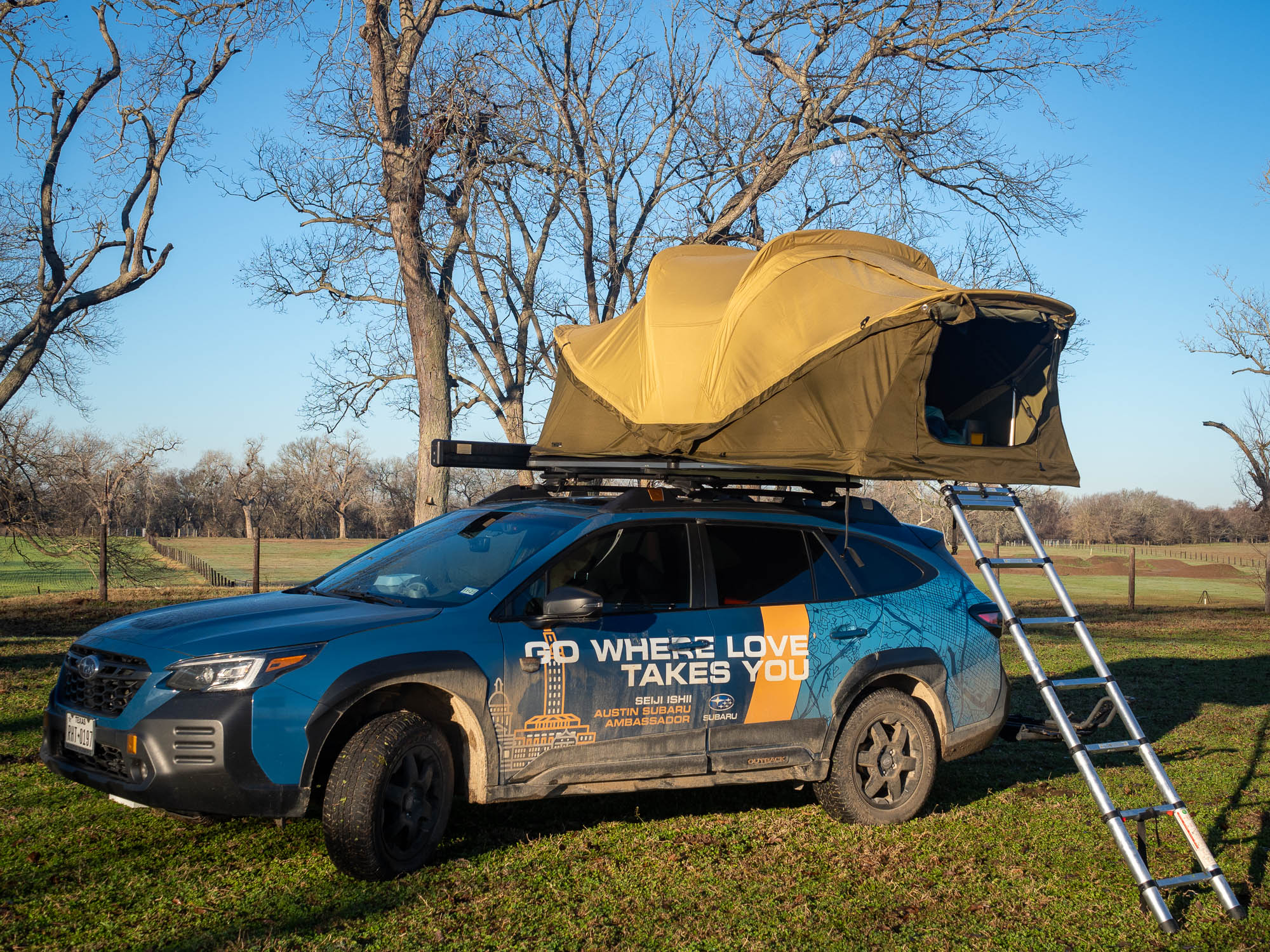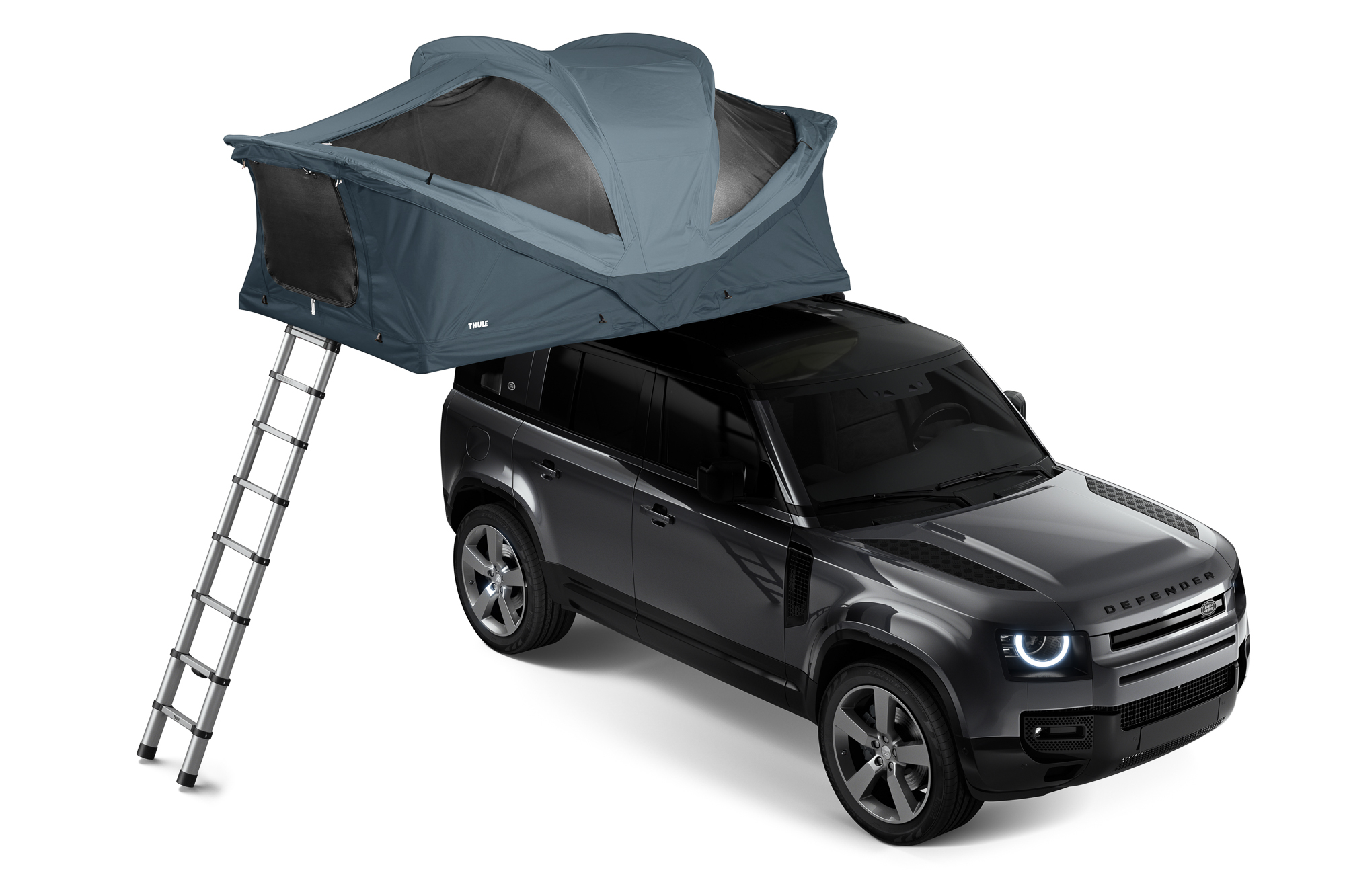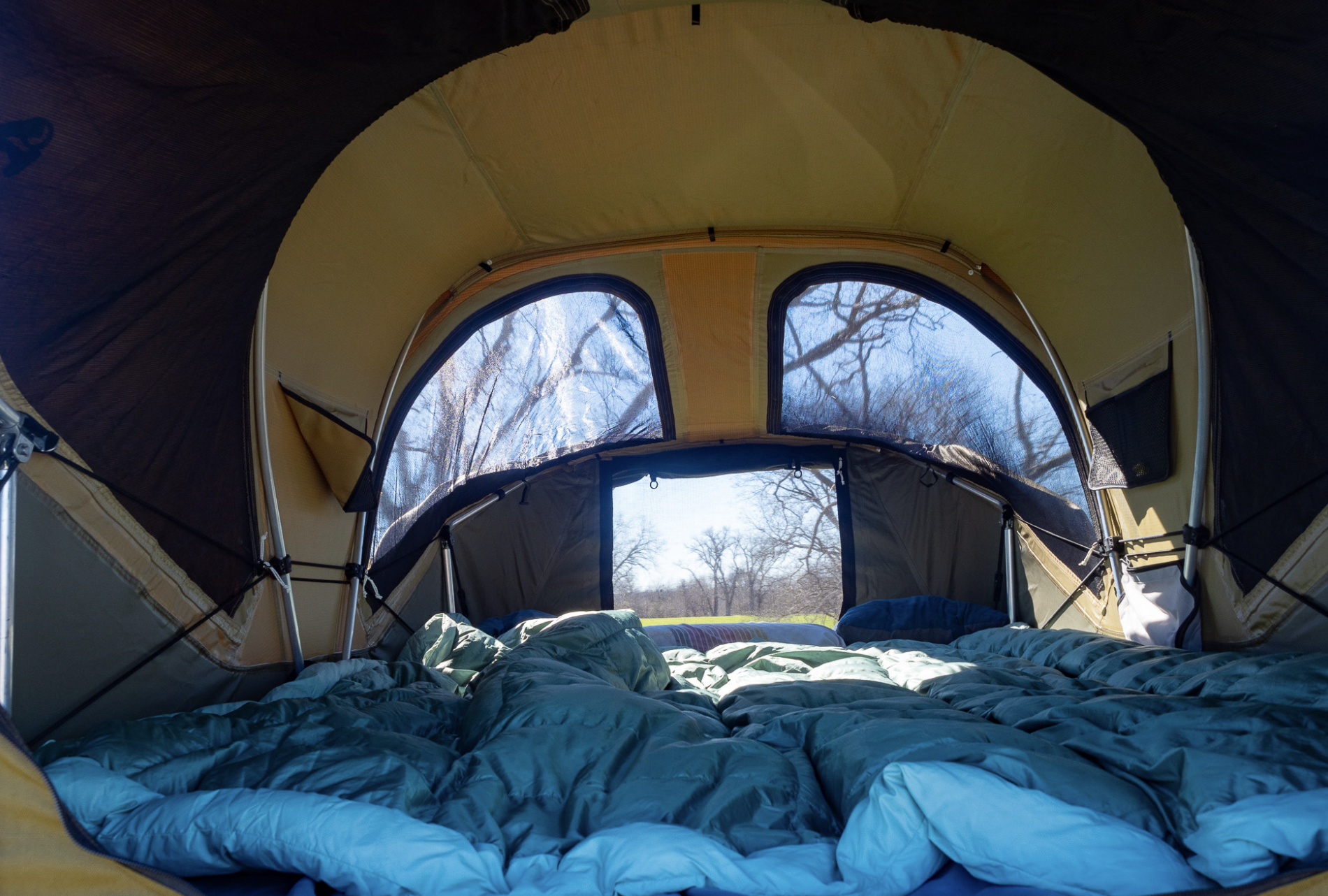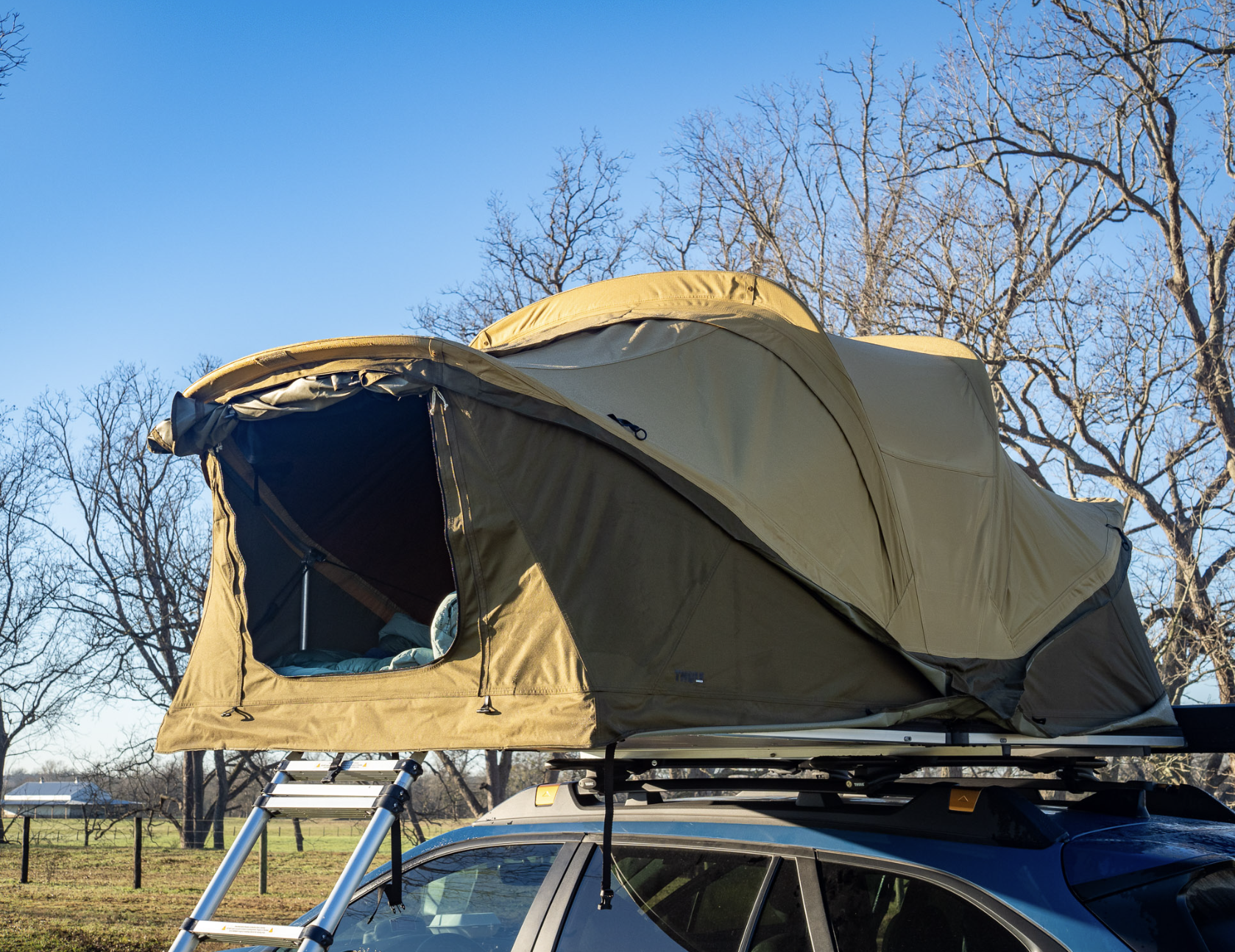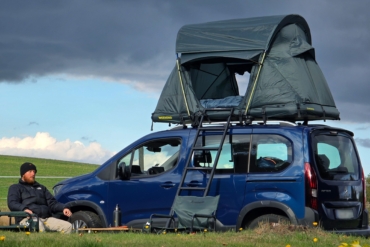If Instagram and overlanding shows are any indication, rooftop tents are all the rage. When Swedish travel gear giant Thule acquired Tepui (a California-based RTT brand) in 2018, many in that sphere considered it a sign that RTTs weren’t just a passing fancy.
Thule then upped the ante by offering its own RTTs alongside Tepui models. In 2023, Thule sold $882+ million. A brand of that size investing in RTTs nudged me to start trying them myself after years of nay-saying. The Thule Approach M earned a spot on my Subaru Outback Wilderness.
I used the Thule Approach M on several spring and early summer weekend camping trips. I discerned how the RTT performed at the campsite. But I also paid attention to quality, having quite a few experiences with RTTs that were expensive but junky.
The Approach M lived atop my vehicle for 4 months. It was on duty for trips with conditions ranging from near freezing to over 90 degrees and everything in between. It normally slept me, another adult, and my dog, Patches.
In short: Thule Approach M is extremely comfortable and spacious for two-plus — almost luxurious. It protects its inhabitants from pounding rain and strong winds while providing excellent ventilation when needed. The build quality is extremely high, and I foresee it lasting a very long time.
- Closed dimensions: 49" x 56" x11"
- Open dimensions: 95" x 56" x 40"
- Weight: 128 lbs.
- Canopy material: 600D water-resistant polyester
- Rainfly material: Thermoplastic-coated nylon
- Cover material: Rubber-coated Cordura nylon
Pros
- Super-easy and quick to deploy and stow
- Cavernous interior for a 2+ person tent
- Very comfortable foam flooring
- Extremely robust and weatherproof construction
- Easy to install for an rooftop tent
Cons
- Travel cover completely separates from the tent
- Ladder was very uncomfortable for bare feet
- Rainfly a bit challenging to install
Thule Approach M Specifications
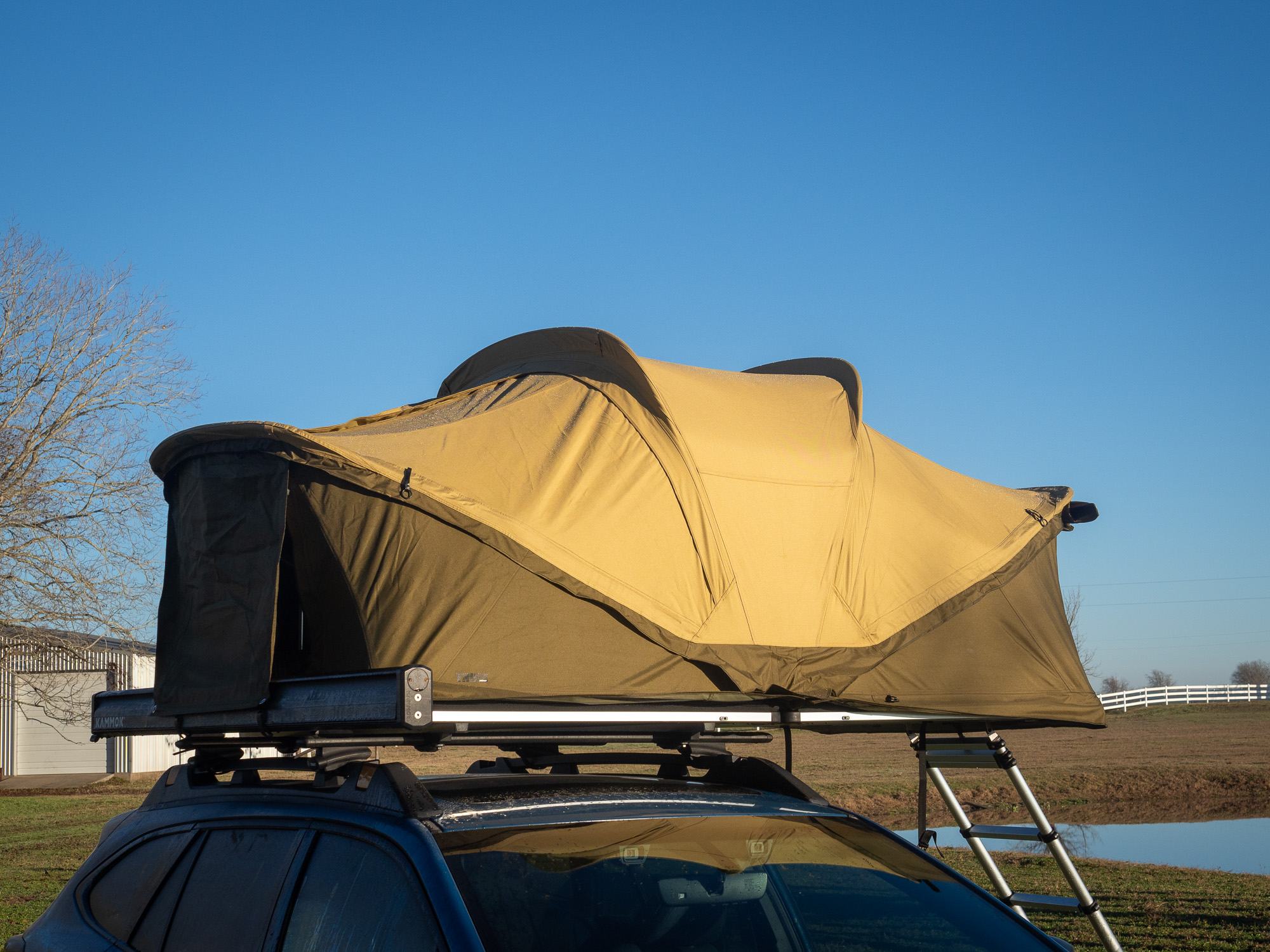
The Thule Approach M is a softshell RTT that measures 49 x 56 x 11 inches in packed mode and is claimed to weigh 128 pounds. It folds out perpendicular to the vehicle’s long axis to provide a floor space of 95 x 54 inches with a peak internal tent height of 40.2 inches. The Approach M’s static weight capacity is 600 pounds. It requires a roof rack crossbar spread of at least 31 inches.
The tent’s base is made of tubular aluminum with an aluminum cap sheet. The interior flooring is covered with dual-density foam. The Approach M’s canopy is made of water-resistant 600D polyester, and the rainfly is made of thermoplastic-coated nylon. Every window has a mosquito netting layer, and the zippers are all sizeable and burly. Finally, the telescoping ladder is also made of aluminum.
Overall, each component of the Thule Approach M felt super high-quality compared to other softshell tents I’ve seen and used.
Thule offers the Approach in two other sizes: a smaller Approach S and a larger Approach L. Each model has two to three color options.
Installation
First, Thule’s packing of the box showed some forethought. Following the directions, the box was splayed out with the tent logically oriented right-side-up. Notably, Thule already installed the mounting tracks on the bottom panel.
Four sets of mounting brackets and the ladder needed limited assembly. All of this took me an unhurried 20 minutes.
The rest of the installation process was similar to other RTTs, but the mounting brackets didn’t have to be positioned beforehand. This meant I could put the tent on the roof rack rails first, which made final positioning so much easier. I did have to get a friend to help me heave it onto my Thule roof rack. Then, I slid it around myself to get it into the final position.
The brackets attach to the tent base’s mounting rails from underneath the roof rack crossbars, taking two bolts per clamp. Thule smartly includes a torque wrench for this critical step. This helps ensure safety and ease of rechecking, which they recommend after the first 124 miles. Each bracket has a keyed lock for security.
The Thule Approach M While Driving
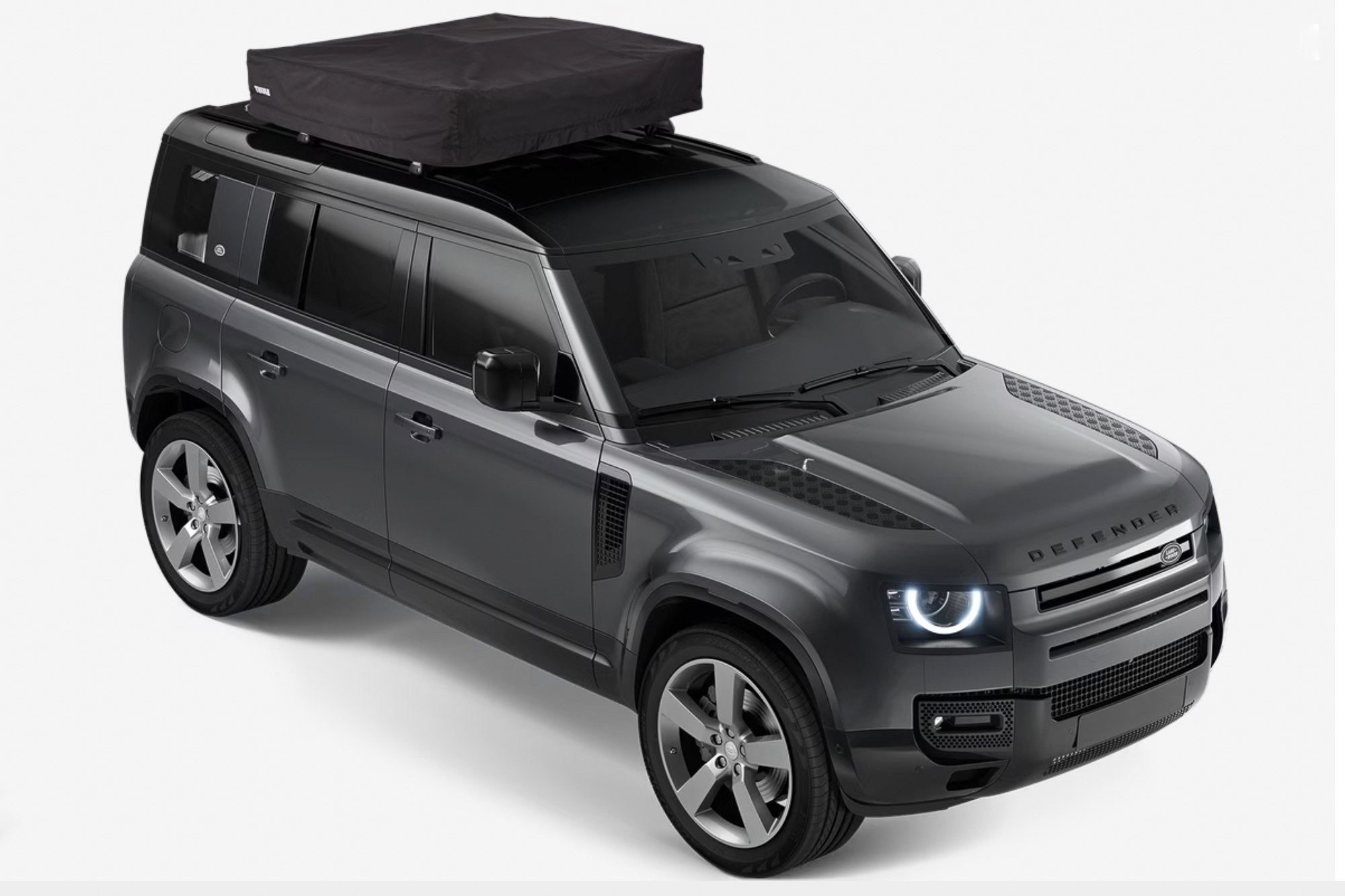
Given its totally square format, the Approach M was surprisingly quiet while driving at highway speeds. At 11 inches tall, plus the added height of the crossbars, I expected some horrendous wind noise. But that somehow wasn’t the case.
There were no annoying flapping sounds, whistles, or vibrations. The tent only made the usual dull hum I was used to from other rooftop items. The only thing that got my attention was the zipper pull on the cover, which I simply tied up.
The weight of the tent, up high on my rack, upset the chassis on the Subaru Wilderness Outback stock suspension. But everything with significant mass does the same.
All negative chassis movements were accentuated: braking dive, acceleration stink bug, body roll, compression, rebound, etc. This isn’t a knock on the Thule Approach M. It’s a reminder that your car will behave differently no matter what RTT you use. Depending on what else you have up there, you may have to modify the suspension to maintain control and comfort.
My casual mileage observation revealed that the Approach M cost me about 4 mpg. This was in comparison to the double bike mounts I had up there before, and 80% of my mileage was on highways.
At the Campsite
Tent Setup
Deploying the Thule Approach M couldn’t have been easier. And the speed matched that of setting up a clamshell type of RTT.
All I had to do was unzip the cover and then extend the ladder, which rested on top of the folded tent in travel mode. I then leveraged the extended ladder against the edge of the tent (which has hinges), and the Approach M unfolded like an accordion.
The length of the ladder and the fulcrum point on the tent’s base made the force requirement minimal. All I had to do from there was set the ladder to the correct length. I was inside in less than 2 minutes of getting out of my car. One minor inconvenience was the separate travel cover. It’s quite sizeable, and I had to stow it somewhere.
Sleeping Accommodations
The Thule Approach M’s overall comfort was instantly apparent. The dual-density foam flooring provided the correct blend of cushiness and support for my 162-pound body while sitting, lounging, or sleeping on my side. This was easily the most comfortable RTT mattress I’ve tested.
Thule states the Approach M can sleep two adults and one child. However, I concluded that it is a very spacious two-person RTT. The length of the tent was outstanding, at almost 8 feet long. At 5’11”, I had plenty of space to spread out as much as I wanted. And my dog could lie below my feet without feeling cramped.
I never woke up with my head crammed into the end of the tent, which often happens with tents that are just long enough for my body. The end walls of the tent are vertical, which provided even more usable length and made the interior look cavernous.
With a 40-inch interior peak height, I also had enough room to sit up straight. The wall architecture left plenty of room to change clothes without bumping into them with my arms.
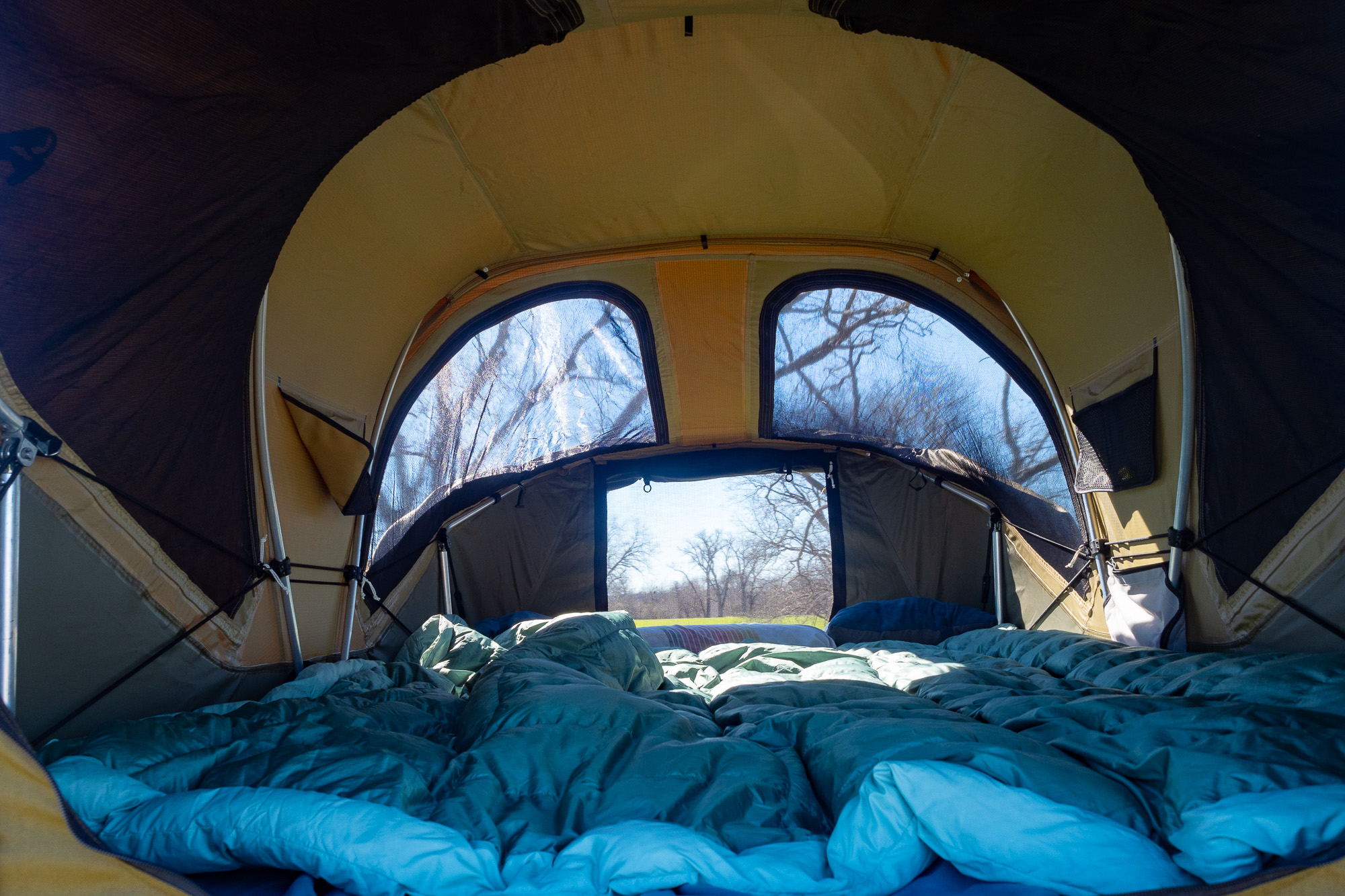
At 4.5 feet wide, it was also super-wide compared to normal tents for two adults. With another adult on board, we never bumped into each other. The width would work with a very small child, but that would be the limit. And even then, for me, at least, it would be a restless night at 1.5 feet of width per person.
With two adults and a 50-pound dog, I had plenty of room to place all the gear I ever needed. This included a 500-600Wh portable power station.
The only comfort-oriented nick I could give it was regarding the telescoping ladder. It hurt my feet badly to use it barefooted or with just socks on. I have sensitive feet, so I asked others to try it, and they all concluded the same thing.
The rungs are quite narrow, and the edges are square, which puts intense pressure on the bottoms of my feet. I had to at least put slippers on, which meant I had to put them inside the tent.
Weatherproofing and Ventilation
It’s muggy, even in winter, in my home base of Central Texas. Ventilation is key for any tent, and the Thule Approach M had it in spades. With the fly off, the majority of the roof and both ends were wide open (with bug screens). Cross-ventilation was a reality no matter which way the tent was oriented in relation to the prevailing winds. The open roof panels also made for excellent stargazing.
The canopy without the fly proved rather rainproof by itself. I woke up one early morning as rain came in through an open roof window. I zipped it shut and lazily refused to get the rainfly up. It was a modest drizzle with occasional light rain, and no water penetrated any of the canopy panels.
When I did need the rainfly, it was somewhat awkward and finicky to set up. But much of this was due to not being able to walk around the tent, as is the case with standard, on-the-ground tents.
Once I did get the rainfly on, the Thule Approach M was incredibly weatherproof for an RTT. I confidently sat out moderately strong Texas rainstorms without worry. I found the tent’s structure and materials incredibly robust for an RTT.
Additionally, the rainfly can be set up in one of three modes. This would have made covering up a no-brainer had I employed one of them. The three modes in the video above show the various ways the rainfly can be in the ready-to-go position. Various levels of coverage can be attained, from “standard” mode for moderate rain to “storm” mode for when it’s really blowing.
Notably, the rainfly has a clear section. I could peer out to check the weather, and it let in light to ease the dreariness of stormy days.
Stowing the Tent
When it was time to pack it in, the Thule Approach M was easy and quick to convert to travel mode. The process was the exact reversal of the deployment procedure. It took slightly longer because putting the cover back on took more time than removing it. This might have cost me an extra 2 minutes if my mind was hazy due to a lack of caffeine.
I thought packing the tent would be a pain, given the tight fit of the cover and the 90-degree bends the zipper had to make. But my worries were dashed the first time I broke camp.
To me, folding the tent back up, shortening the ladder, and then zipping the cover on was easier than going around a clamshell RTT and stuffing the fabric inside so it would shut properly. Again, it took me maybe four minutes instead of the two it took me to deploy it.
Thule Approach M Durability
Although I didn’t test the Approach M for a long duration, for the 4 months it lived on my car, it suffered zero damage. I cannot say this about many things I test, particularly soft goods. The fabrics and their coatings felt remarkably robust, the zippers were massive, and the overall quality of construction was visible and obvious.
The fabrics, coatings, and construction quality in the Thule Approach M instilled confidence that the Approach M would last a longer time than any other RTT I’ve tried. It was easily the most durable-feeling and -looking softshell RTT I’ve ever used.
Conclusions on the Thule Approach M Rooftop Tent
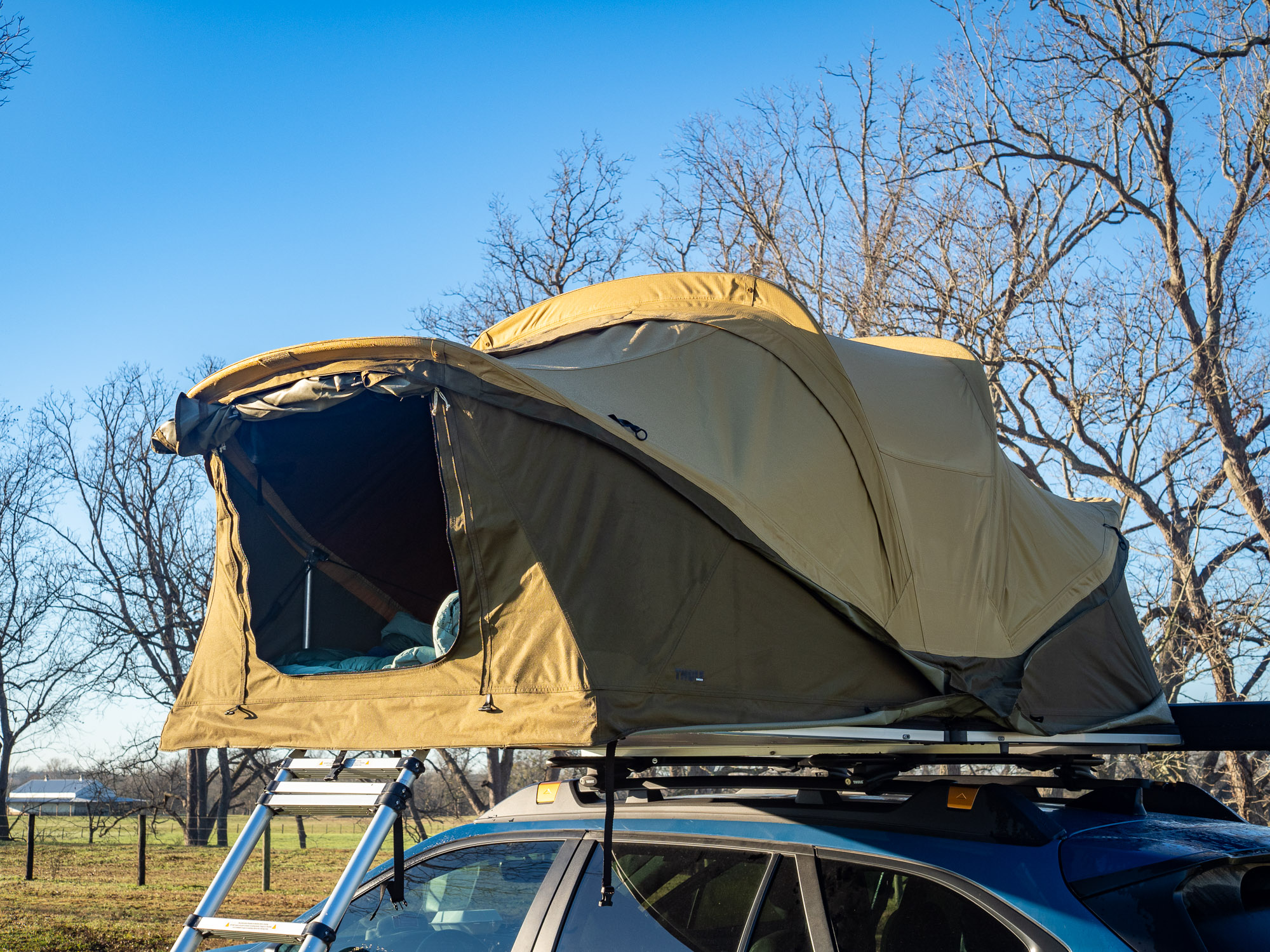
High-quality RTTs are a significant investment. Think of how many regular tents you could buy for the same amount of money. Knowing this, an RTT must meet high standards to occupy the valuable rack space of my daily driver. And the Thule Approach M had it all.
It couldn’t have been easier or quicker to deploy and strike down. It was so spacious and comfortable — downright luxurious for someone used to standard tents. I felt like I was glamping the entire time, especially comfortably lounging on my back and stargazing. I won’t use the tent without packing wine and cheese anymore.
And possibly most importantly, it was the most robust and well-built softshell RTT I’ve ever used or seen.
I don’t think I can give a softshell RTT any higher praise. Yes, the MSRP of $2,500 will buy a lot of regular tents. But if you value the comfort, space, quickness, being off the ground, and other attributes of RTTs, the Thule Approach M is definitely worth considering.
